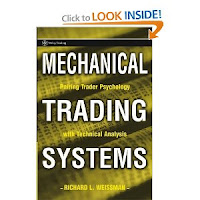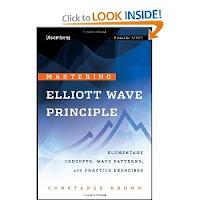السلام عليكم
لكل المتداولين اقدم لكم مجموعة كتب حول موجات اليوت
لكل المتداولين اقدم لكم مجموعة كتب حول موجات اليوت
How to Call the Market Using the Elliot Wave Principle

A Great Classic for Three Decades: Now In Its 10th Edition, Consider What This "Definitive ****" Offers You Take a moment to look over your books about investing. Have any of them given you a successful method for making profits and reducing risks? Is there even one such book that has proven reliable over the years? Alas, most investors would say "no." That's because so few investment books are "classic" in the true sense: For years investors keep buying the book, and they keep using the method to make the most of their opportunities. Three decades years ago -- 1978 -- is one of the last times an investment book was written that is worthy of being called "classic." One of the two men who authored that book was a 26 year-old market analyst working at Merrill Lynch's headquarters on Wall Street. The young man had earned a lot of attention in a short time by using a forecasting tool that almost no one had heard of. Yet his market forecasts were startlingly accurate: Robert Prechter was the young man's ****, and he used a method called the "Elliott Wave Principle." A. J. Frost was one of the few other financial professionals who used the Wave Principle. In a distinguished 20-year career, Frost had likewise made many astonishingly accurate forecasts. His colleagues regarded him as the consummate technical analyst. Frost and Prechter met in May of 1977 and became fast friends. Eighteen months later, they published Elliott Wave Principle - Key to Market Behavior.


R_N_Elliott

Presents three ground-breaking works in which Elliott first described his discoveries to the world, plus a detailed biography, rare photos and more. (Hardback, 308 pp.).


Mastering Elliott Wave

This work presents the first scientific, objective approach to market forecasting with the Elliott Wave Theory. The Theory, as introduced by R.N. Elliott in the early 1930's, defines, quantifies and classifies the seemingly random undulations of mass psychology (market action) into visual patterns.
Unfortunately, in its original form, many concepts and ideas concerning real-time application of the Elliott Wave Theory were left to the analyst to discover. After over a decade of exhaustive research, real-time trading and teaching, author Glenn Neely has greatly expanded upon and refined the concepts first discovered by R.N. Elliott to help you more accurately apply them to your trading and investments. For the first time, these concepts are presented in a logical, step-by-step fashion in the actual order they should be applied to a chart. Consequently, all guess work typically associated with the Wave Theory has been eliminated for you.
If you yearn for both a greater understanding of the dynamics of price action and an ability to accurately forecast future price action, this book will help you achieve that goal like no other. It is widely regarded as the most complete explanation of Elliott Wave Theory available...and a feast for both novice and experienced Elliotticians alike.


Gur, Michael - The Symmetry Wave Trading Method

Reveals the author's private strategy for winning exceptionally high profits in both the stock and futures markets.


Advanced Get - Mechanical Trading System

A wide variety of flexible trading systems that combine sophisticated technical analysis with trading psychology theory
Mechanical Trading Systems examines the development process for choosing and using mechanical trading systems in conjunction with trader psychology. This book discusses the advantages and disadvantages of mechanical trading systems; the dangers in system development and how to avoid them; the optimal methods for back-testing trading systems; position sizing and other risk quantification tools; and methods of improving rates of return on investments without significantly increasing risk. Most importantly, through a detailed examination of various types of unsuccessful trader personality traits (e.g., fearfulness, greed, and impatience), the book recommends different types of trading systems for a diverse array of trader types.
Richard L. Weissman (Port Richey, FL) has seventeen years' experience as a trader and developer of trading systems. He currently provides independent consultation an d training services to traders and risk management professionals in the areas of technical analysis, risk management, and trader psychology.


34 Elliot Wave Lessons

By convention, most Elliott Wave Principle (EWP) practitioners focus on individual market price movement. Connie Brown has a global reputation of developing analysis that focuses on the integration of global markets. In a two book series you will be taken through the steps to master the global cash flows of today’s financial markets. The approach found in this first book differs from the traditional view of EWP because it shows you how geometry and the use of simple boxes drawn within a trend will guide you away from the common complaint of subjectivity, thereby making smarter trades of higher probability. While EWP can be a challenging topic, the structure of this book eases you into the analysis principles.




















